-
 Bitcoin
Bitcoin $82,939.8540
-1.12% -
 Ethereum
Ethereum $1,790.1968
-1.04% -
 Tether USDt
Tether USDt $0.9996
0.00% -
 XRP
XRP $2.1322
0.32% -
 BNB
BNB $592.4750
-0.76% -
 Solana
Solana $118.3109
-2.85% -
 USDC
USDC $1.0000
0.01% -
 Dogecoin
Dogecoin $0.1683
-1.60% -
 Cardano
Cardano $0.6513
-1.43% -
 TRON
TRON $0.2377
-0.97% -
 UNUS SED LEO
UNUS SED LEO $9.0742
-4.17% -
 Chainlink
Chainlink $12.6773
-1.82% -
 Toncoin
Toncoin $3.3268
-1.48% -
 Stellar
Stellar $0.2503
-3.53% -
 Avalanche
Avalanche $17.8932
-0.77% -
 Shiba Inu
Shiba Inu $0.0...01222
-0.32% -
 Sui
Sui $2.2152
-2.74% -
 Hedera
Hedera $0.1612
-2.25% -
 Litecoin
Litecoin $82.2295
-2.55% -
 Polkadot
Polkadot $3.9361
-3.10% -
 MANTRA
MANTRA $6.2831
-0.04% -
 Bitcoin Cash
Bitcoin Cash $298.7688
-0.22% -
 Dai
Dai $1.0001
0.02% -
 Bitget Token
Bitget Token $4.4367
-2.42% -
 Ethena USDe
Ethena USDe $0.9990
-0.02% -
 Pi
Pi $0.5933
10.29% -
 Monero
Monero $215.1864
-0.04% -
 Hyperliquid
Hyperliquid $11.7309
-0.93% -
 Uniswap
Uniswap $5.8023
-1.26% -
 OKB
OKB $51.5001
6.22%
What is Cosmos ecosystem?
Cosmos is a decentralized network of interconnected blockchains using the Tendermint Core consensus engine and IBC protocol to enable interoperability and data exchange between independent "zones," facilitated by the central Cosmos Hub.
Mar 25, 2025 at 09:42 pm
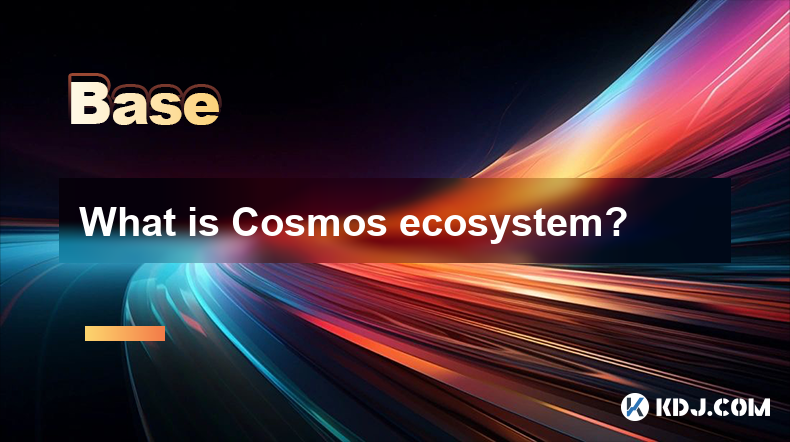
Key Points:
- Cosmos is a decentralized network of independent, yet interconnected, blockchains.
- It aims to solve blockchain interoperability issues, allowing different chains to communicate and exchange data.
- The Cosmos Hub acts as the central communication point for this network.
- Cosmos uses the Tendermint Core consensus engine for security and efficiency.
- Several tools and technologies facilitate the creation and connection of new blockchains within the Cosmos ecosystem.
What is the Cosmos Ecosystem?
The Cosmos ecosystem is a rapidly expanding network of independent blockchains designed to solve the critical issue of interoperability in the blockchain world. Unlike many blockchain projects that operate in isolation, Cosmos fosters a collaborative environment where diverse blockchains can seamlessly interact and exchange value. This interconnectedness is its core strength, allowing for a more robust and efficient overall blockchain landscape. The key is its ability to connect disparate blockchains without sacrificing the individual sovereignty of each.
How Does Cosmos Achieve Interoperability?
Cosmos achieves interoperability through a sophisticated architecture built on the concept of the "Cosmos Hub." Think of the Hub as a central communication relay. Individual blockchains, called "zones," connect to the Hub using the Inter-Blockchain Communication (IBC) protocol. This protocol defines the standardized messaging system that allows different blockchains to communicate and transfer tokens or data securely. The Hub acts as a bridge, facilitating transactions between these zones without requiring direct connections between each individual blockchain. This significantly reduces complexity and improves scalability.
What is the Role of the Cosmos Hub?
The Cosmos Hub plays a crucial role in the overall functioning of the Cosmos ecosystem. It's the central point of communication for all connected blockchains. It's also a secure and reliable blockchain in its own right, leveraging the Tendermint Core consensus mechanism for transaction validation. This means that the Hub itself is highly resistant to attacks and ensures the integrity of the inter-blockchain communication process. The Hub's functionality extends beyond simple relaying; it enables the governance and security of the entire network.
What is Tendermint Core?
Tendermint Core is the underlying consensus engine powering the Cosmos Hub and many other blockchains within the Cosmos ecosystem. It's a Byzantine Fault Tolerant (BFT) algorithm designed for high throughput and security. Unlike Proof-of-Work (PoW) systems like Bitcoin, Tendermint Core uses a Proof-of-Stake (PoS) mechanism, which is significantly more energy-efficient and environmentally friendly. It ensures the network's security and integrity by requiring validators to stake their tokens to participate in consensus, incentivizing honest behavior.
How Can I Build a Blockchain on Cosmos?
Cosmos provides a comprehensive suite of tools and resources to simplify the process of building and deploying new blockchains. This process generally involves the following steps:
- Choose a Software Development Kit (SDK): Cosmos offers the Cosmos SDK, a robust framework that streamlines the development of custom blockchains. It provides pre-built modules and functionalities, reducing development time and effort.
- Define Your Blockchain's Specifications: Determine the specific features and functionalities of your blockchain, including its tokenomics, governance model, and consensus mechanism.
- Develop and Test Your Blockchain: Use the Cosmos SDK to build your blockchain, thoroughly testing it to ensure its stability and security.
- Deploy Your Blockchain: Once testing is complete, deploy your blockchain to the mainnet or a testnet.
- Connect to the Cosmos Hub: Use the IBC protocol to connect your new blockchain to the Cosmos Hub, enabling interoperability with other chains in the ecosystem.
What are some key projects within the Cosmos ecosystem?
The Cosmos ecosystem boasts a vibrant array of projects, each offering unique functionalities and services. These range from decentralized exchanges and payment systems to decentralized applications (dApps) and various other blockchain-based solutions. Each project leverages the interoperability features of Cosmos to interact with other chains, expanding the overall utility and reach of the entire ecosystem. The specific projects and their functionalities are constantly evolving as new ones emerge and existing ones develop.
Frequently Asked Questions:
Q: What is the difference between Cosmos and other blockchain platforms?
A: Unlike many blockchain platforms that operate in isolation, Cosmos is designed specifically to facilitate interoperability between different blockchains. This allows for a more interconnected and efficient blockchain ecosystem.
Q: Is Cosmos scalable?
A: The scalability of Cosmos is a key advantage. Its architecture, which involves multiple interconnected blockchains, allows for parallel processing of transactions, distributing the load and improving overall throughput compared to many single-chain blockchains.
Q: How secure is the Cosmos network?
A: The Cosmos network utilizes the Tendermint Core consensus mechanism, a highly secure BFT algorithm. Combined with the Proof-of-Stake (PoS) mechanism, this provides a robust security model resistant to various types of attacks. The security of individual blockchains within the Cosmos ecosystem also depends on their specific implementation.
Q: What are the potential risks associated with investing in Cosmos?
A: As with any cryptocurrency investment, there are inherent risks involved. These include market volatility, technological risks, regulatory uncertainty, and the potential for unforeseen security vulnerabilities. Thorough research and risk assessment are crucial before investing in any cryptocurrency, including Cosmos-related assets.
Q: How can I participate in the Cosmos ecosystem?
A: Participation in the Cosmos ecosystem can involve several avenues, including staking ATOM (the native token of the Cosmos Hub) to become a validator, developing and deploying applications on the Cosmos SDK, or simply using applications built on the various blockchains within the ecosystem.
Q: What is the future of the Cosmos ecosystem?
A: The future of the Cosmos ecosystem is promising, given its focus on interoperability and its growing adoption among developers and users. However, its continued success depends on several factors, including technological advancements, community growth, and the overall adoption of blockchain technology. The ongoing development of IBC and the emergence of new projects will likely shape its future trajectory.
Disclaimer:info@kdj.com
The information provided is not trading advice. kdj.com does not assume any responsibility for any investments made based on the information provided in this article. Cryptocurrencies are highly volatile and it is highly recommended that you invest with caution after thorough research!
If you believe that the content used on this website infringes your copyright, please contact us immediately (info@kdj.com) and we will delete it promptly.
- Titan CEO Chris Chung Calls on Crypto Industry to Establish Ethical Norms Through Social Consensus
- 2025-04-06 02:20:12
- CRV Price Prediction: Bullish Preference for CRV, Citing Its Recent Rebound from a Key Support Level
- 2025-04-06 02:20:12
- Newsmax (NYSE:NMAX) IPO Priced at $10 a Share, Opens 735% Above IPO Price
- 2025-04-06 02:15:12
- Amid the ongoing Trump tariff war, the cryptocurrency market has experienced a major pullback during the last month of Quarter 1 (Q1) 2025.
- 2025-04-06 02:15:12
- With Trump's new tariff announcement coming on April 3, the crypto market reacted with fear and saw a decline.
- 2025-04-06 02:10:12
- Members of the Trump family are further cozying up to cryptocurrencies.
- 2025-04-06 02:10:12
Related knowledge
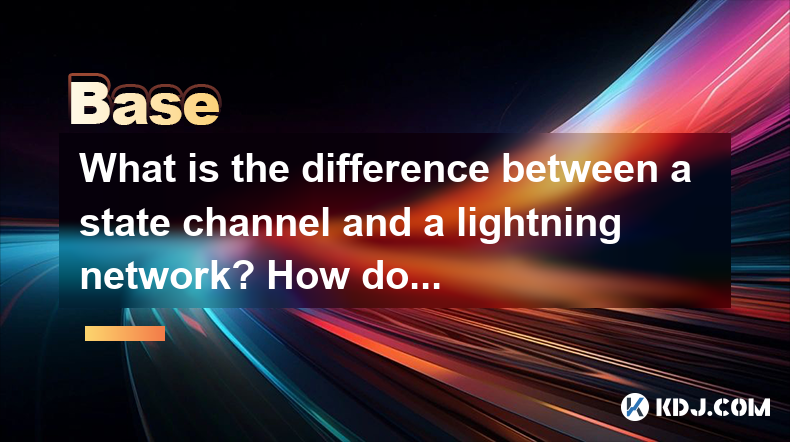
What is the difference between a state channel and a lightning network? How do they improve transaction efficiency?
Apr 05,2025 at 05:21pm
State channels and the Lightning Network are two significant technologies within the cryptocurrency ecosystem aimed at improving transaction efficiency on blockchain networks. Both solutions address the scalability issues of blockchain systems, particularly in handling a high volume of transactions quickly and with low fees. However, they operate differ...

Why is the oracle called the bridge between blockchain and the real world?
Apr 04,2025 at 04:00am
The concept of an oracle in the cryptocurrency and blockchain world is crucial for understanding how these decentralized systems interact with external data. The oracle is often referred to as the bridge between blockchain and the real world because it serves as a vital intermediary that fetches, verifies, and transmits off-chain data to the on-chain en...
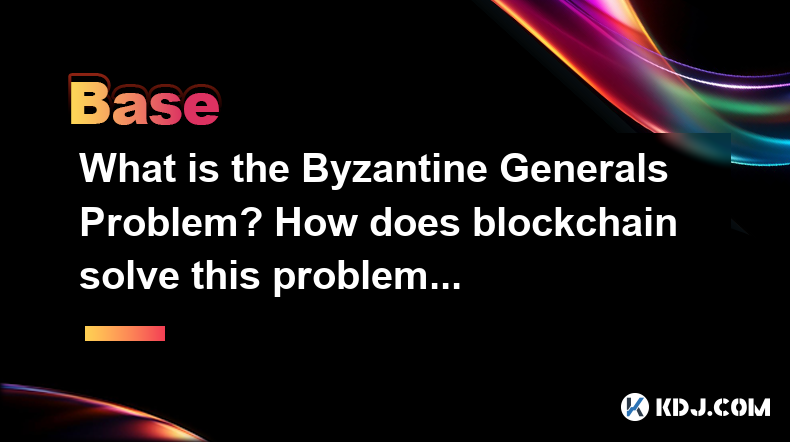
What is the Byzantine Generals Problem? How does blockchain solve this problem?
Apr 05,2025 at 06:29am
The Byzantine Generals Problem is a classic problem in the field of distributed computing and computer science, which has significant implications for the reliability and security of decentralized systems, including blockchain technology. This problem is named after a hypothetical scenario involving several generals of the Byzantine army who must coordi...

What role does the Merkle tree play in the blockchain? Why can it verify data integrity?
Apr 04,2025 at 01:29pm
The Merkle tree plays a crucial role in the blockchain, primarily due to its ability to efficiently and securely verify data integrity. This article will delve into the structure of a Merkle tree, its implementation in blockchain, and how it ensures the integrity of data. Understanding the Structure of a Merkle TreeA Merkle tree, also known as a hash tr...
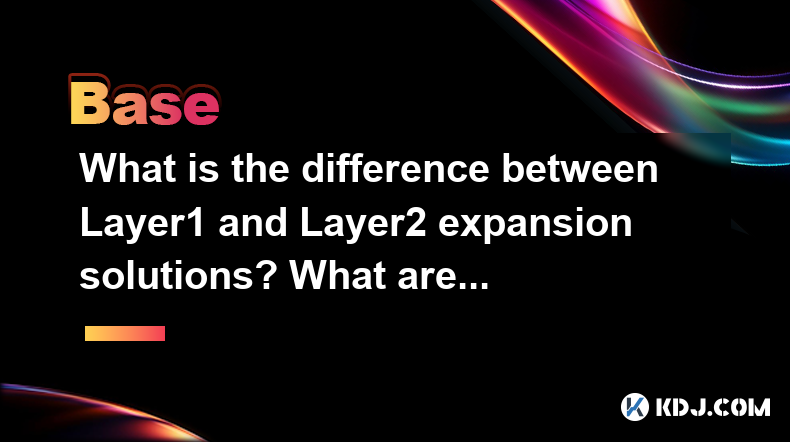
What is the difference between Layer1 and Layer2 expansion solutions? What are their advantages and disadvantages?
Apr 05,2025 at 12:49pm
In the world of cryptocurrencies and blockchain technology, scalability is a critical issue that developers and users alike grapple with. To address this, the industry has developed various solutions, primarily categorized into Layer1 and Layer2 expansion solutions. Understanding the differences between these two approaches, along with their respective ...
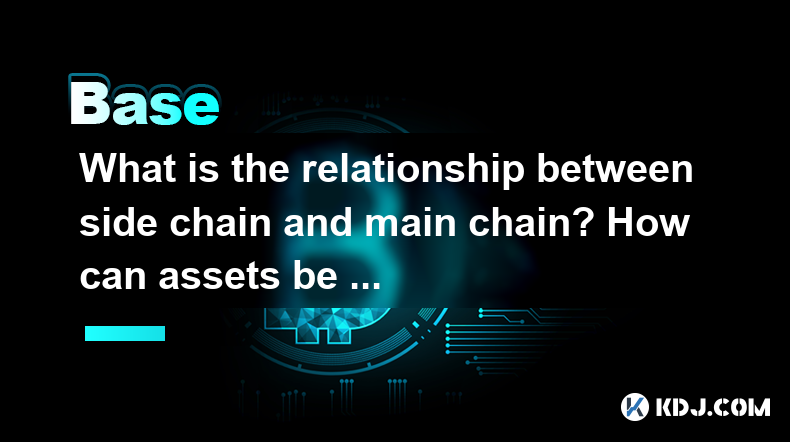
What is the relationship between side chain and main chain? How can assets be transferred between the two securely?
Apr 05,2025 at 07:00pm
The relationship between side chains and main chains is a fundamental concept in blockchain technology that enables enhanced scalability, privacy, and functionality. Side chains are separate blockchains that are linked to a main chain—typically a well-established blockchain like Bitcoin or Ethereum. This connection allows assets to be transferred betwee...

What is the difference between a state channel and a lightning network? How do they improve transaction efficiency?
Apr 05,2025 at 05:21pm
State channels and the Lightning Network are two significant technologies within the cryptocurrency ecosystem aimed at improving transaction efficiency on blockchain networks. Both solutions address the scalability issues of blockchain systems, particularly in handling a high volume of transactions quickly and with low fees. However, they operate differ...

Why is the oracle called the bridge between blockchain and the real world?
Apr 04,2025 at 04:00am
The concept of an oracle in the cryptocurrency and blockchain world is crucial for understanding how these decentralized systems interact with external data. The oracle is often referred to as the bridge between blockchain and the real world because it serves as a vital intermediary that fetches, verifies, and transmits off-chain data to the on-chain en...

What is the Byzantine Generals Problem? How does blockchain solve this problem?
Apr 05,2025 at 06:29am
The Byzantine Generals Problem is a classic problem in the field of distributed computing and computer science, which has significant implications for the reliability and security of decentralized systems, including blockchain technology. This problem is named after a hypothetical scenario involving several generals of the Byzantine army who must coordi...

What role does the Merkle tree play in the blockchain? Why can it verify data integrity?
Apr 04,2025 at 01:29pm
The Merkle tree plays a crucial role in the blockchain, primarily due to its ability to efficiently and securely verify data integrity. This article will delve into the structure of a Merkle tree, its implementation in blockchain, and how it ensures the integrity of data. Understanding the Structure of a Merkle TreeA Merkle tree, also known as a hash tr...

What is the difference between Layer1 and Layer2 expansion solutions? What are their advantages and disadvantages?
Apr 05,2025 at 12:49pm
In the world of cryptocurrencies and blockchain technology, scalability is a critical issue that developers and users alike grapple with. To address this, the industry has developed various solutions, primarily categorized into Layer1 and Layer2 expansion solutions. Understanding the differences between these two approaches, along with their respective ...

What is the relationship between side chain and main chain? How can assets be transferred between the two securely?
Apr 05,2025 at 07:00pm
The relationship between side chains and main chains is a fundamental concept in blockchain technology that enables enhanced scalability, privacy, and functionality. Side chains are separate blockchains that are linked to a main chain—typically a well-established blockchain like Bitcoin or Ethereum. This connection allows assets to be transferred betwee...
See all articles





















































































